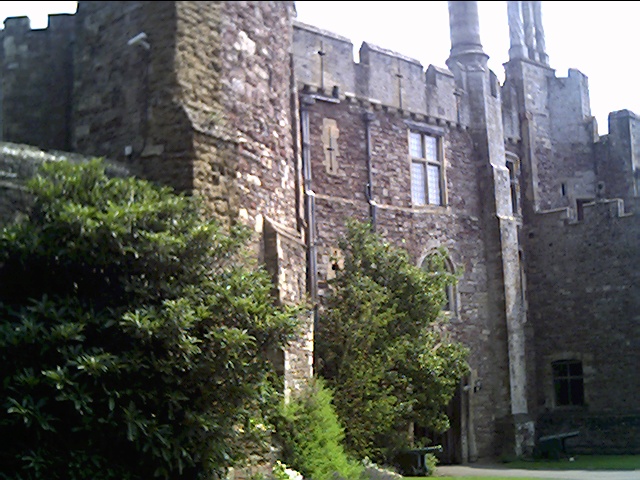 Berkeley Castle (historically sometimes spelt Berkley Castle) is a castle in the town of Berkeley, Gloucestershire, UK
Berkeley Castle (historically sometimes spelt Berkley Castle) is a castle in the town of Berkeley, Gloucestershire, UK
It was constructed from 1117 A.D., on the orders of Henry II, with the aim of defending the Severn estuary and the Welsh border. It continues to belong to the Berkeley family, descendants of Robert Fitzharding, who completed the keep in 1153.
King Edward II of England was held in the castle for 18 months, before supposedly being murdered in 1327 there by unknown means, although popular stories of a red hot poker or suffocation persist. The cell where he is supposed to have been imprisoned can still be seen, along with the adjacent 28′ deep dungeon. The castle has remained within the same family since its construction, with many areas now open to the public. It is the oldest continuously-occupied castle in England.
In the 14th Century, a new Great Hall was built where the last Jester in England died after falling from the Minstral’s Gallery. Adjoining the Great Hall is one of two of the original chapels, that includes painted wooden vaulted ceilings and one of the first examples of a biblical passage (from the Book of Revelation), written in the language of those who read it – Norman French, it is the earliest attempt to translate the Bible into a common language. This room also contains an illustrated vellum book of plainsong that was used in Catholic rites, before the family converted to Protestantism in the 16th Century. In the 20th century, the 8th Earl Randall installed much of the gardens, remodeled parts of the castle and added a new porch in the same gothic style as the rest of the castle. One change included an Art Nouveau take on a Medieval bedroom.
The castle is surrounded by beautiful Elizabethan terraced gardens, including Elizabeth I’s bowling green and a pine that is reputed to have been grown from a cutting taken from a tree at the Battle of Culloden in 1746.
During the English Civil War, the castle still held sufficient significance for it to be captured in 1645 by Colonel Thomas Rainsborough, for the Parliamentarian side after a siege which saw cannon being fired at point blank range from the adjacent church roof. As was usual, the walls were left breached after this siege but the Berkeley family were allowed to retain ownership on condition that they never repaired the breach in the Keep, still enforced today by the original Act of Parliament drawn up at the time; according to Pevsner, the breach is partially filled by a subsequent ‘modern’ rebuild..
Known Ancestors with links to Berkeley Castle:
- Thomas De Berkeley 1245-1321





